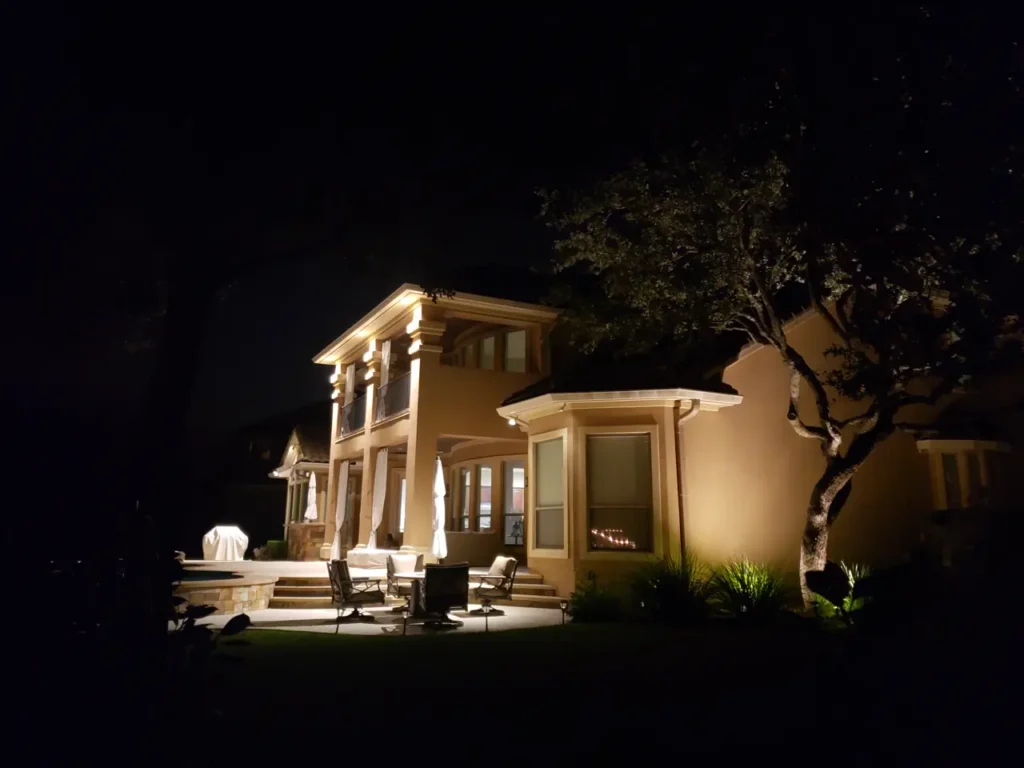Outdoor lighting is more than just a practical necessity; it’s a chance to transform your home into a warm and inviting retreat after sunset. Yet, many homeowners overlook this vital element, often resulting in lackluster and ineffective lighting solutions. From garden paths to cozy seating areas, proper illumination can elevate your outdoor aesthetics and enhance security, creating a captivating atmosphere.
Designing outdoor lighting is an art and a science, but with a few essential tips, you can illuminate your surroundings to perfection. Whether you’re seeking to highlight architectural features, create mood settings, or ensure safe passage, understanding the strategies behind effective outdoor lighting is crucial.
In this article, learn about these practical tips that will help you maximize your outdoor space and create a stunning nighttime landscape that you—and your guests—will love.
Tips for Designing Your Outdoor Lighting
Understand Your Lighting Goals
Before you begin, identify your goals for outdoor lighting. Determine if you want lighting for safety, aesthetic appeal, or functionality. For instance:
- Safety lighting: focuses on walkways, driveways, and entryways.
- Ambience lighting: adds a warm, inviting glow, ideal for patios and decks.
- Accent lighting: highlights landscape features or architecture, bringing depth and character to the space.
This clarity helps you choose appropriate fixtures and lighting techniques.
Consider Different Lighting Techniques
Outdoor lighting isn’t one-size-fits-all; different techniques serve specific purposes:
- Path lighting: Low-level lights illuminate walkways, guiding guests safely and accentuating landscaping details.
- Uplighting: Placing lights at ground level directed upwards highlights trees, sculptures, or architectural features.
- Downlighting: Fixtures mounted high (like on trees) cast light downward, mimicking natural moonlight.
- Spotlighting: Focused beams create focal points on statues or water features, adding drama.
- Backlighting: Soft, hidden lights behind objects create a silhouette effect, enhancing dimension.
Experimenting with these techniques can bring out your yard’s full potential, creating layers of light.
Choose the Right Fixtures for Each Area
Outdoor spaces require different fixtures. Popular outdoor fixtures include:
- Floodlights: Powerful lights ideal for security and covering large areas.
- Step lights: Perfect for staircases, adding both safety and style.
- Wall lights: Mounted on exterior walls, these fixtures highlight architectural features and improve visibility.
- String lights: Great for creating a cozy, inviting atmosphere on patios and decks.
- Post lights: Ideal for driveways or pathways, adding a classic touch to the landscape.
Ensure fixtures are weather-resistant and rated for outdoor use to withstand various elements.
Plan for Layered Lighting
Effective outdoor lighting combines multiple layers to create depth and dimension. This includes:
- Ambient lighting: General lighting for visibility and safety, achieved with floodlights, wall lights, or larger fixtures.
- Task lighting: Focused lights for specific tasks, like step lights for stairways or path lights for walkways.
- Accent lighting: Draws attention to particular features, such as garden statues or water features, enhancing aesthetic appeal.
Layering lighting brings balance and flexibility to outdoor spaces, allowing you to adjust the ambiance for different occasions.
Select the Right Bulbs and Color Temperature
Bulb choice and color temperature influence the atmosphere of your outdoor lighting. Here’s what to consider:
- LED bulbs: These are energy-efficient, long-lasting, and ideal for outdoor use.
- Halogen bulbs: They produce a warm light but consume more energy than LEDs.
- Solar-powered lights: Environmentally friendly and budget-friendly but depend on sunlight for power.
Ensure Proper Placement for Functionality and Style
Thoughtful placement is essential to create both functional and visually pleasing outdoor lighting:
- Place pathway lights about 10-15 feet apart for a balanced look without overcrowding.
- Use uplights sparingly to avoid overwhelming the landscape with too much brightness.
- Keep lights low when illuminating walls or fences to minimize glare.
Walk around your yard at night to envision how each area will appear under different lighting. This helps fine-tune placement before installation.
Use Timers and Motion Sensors for Efficiency
Incorporating timers and motion sensors increases energy efficiency, security, and convenience:
- Timers: ensure lights turn on and off at specific times, ideal for landscape lights or porch lights.
- Motion sensors: activate lights only when needed, providing security while saving power.
Smart lighting systems can be controlled via apps, allowing you to adjust settings even when away from home.
Balance Brightness and Minimize Glare
Overly bright lights can cause glare and reduce visual comfort. Aim for soft, diffused lighting that enhances, rather than overwhelms, your yard:
- Use low-wattage bulbs for pathways and accent lighting to avoid harsh light.
- Shield lights to focus the beam downward, reducing glare and light pollution.
Adjust the brightness to create a gentle glow that complements your landscape and maintains nighttime ambiance.
Prioritize Safety and Maintenance
Safety is critical in outdoor lighting. Avoid placing fixtures where they may cause tripping, and secure cables properly. Regular maintenance keeps your lighting system efficient and safe:
- Clean fixtures periodically to remove dirt, dust, or debris.
- Check for weather damage, especially after storms or heavy rainfall.
- Replace bulbs as needed and inspect wiring for any signs of wear.
This upkeep ensures your outdoor lighting system remains reliable and beautiful for years to come.
Conclusion
Well-designed outdoor lighting can elevate your home’s exterior, providing a blend of style, security, and functionality. By identifying your goals, choosing appropriate fixtures, and using lighting techniques effectively, you can create an outdoor space that’s enjoyable at all hours. Remember to balance brightness, maintain fixtures, and adapt to your yard’s unique features to make the most of your outdoor lighting. Contact us today to get started!

